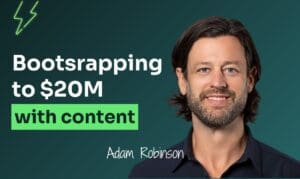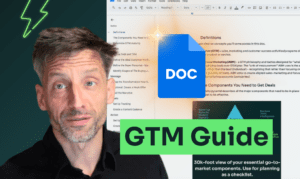Loads of product companies experiment with LinkedIn Ads, only to find that it drains budgets. Then they call the verdict: “it’s expensive”. Here is a shocker for you: in business, there is no such thing as “cheap” or “expensive”. Something either makes a return (little or a lot), or no return. Or, you can’t tell whether it makes a return on investment.
LinkedIn Ads has fallen in the second category for most marketers who have tried to get their feet wet on the platform’s paid end. It hasn’t generated leads at an acceptable cost, or the leads have not converted to customers at a high enough ratio.
Ricardo Ghekiere is here to change that. He takes us in the trenches of paid social with a focus on LinkedIn.
Start with the right expectations
Here are some truths that will help you set off with the right foot when launching your next campaign.
- Use Li Ads if you have an ACV (average contract value) of at least 10,000 dollars/euros. Below this, the “Li Ads math” usually doesn’t work.
- LinkedIn Ads should be used as a top of funnel, demand generation tool. As a consequence of this, comes the next point:
- Don’t try to get leads (demos, webinar registrants, what not) with cold traffic. Instead, promote content. Educational, high value pieces. People are on Li to consume content and interact, so provide THAT with your ad
- Make the content consumable in the post, in the feed – don’t try to sway visitors on your landing page. Adding friction decreases results.
- Retarget people who have consumed your content with more content or convert them into a lead.
- Use different ad forms when retargeting. Ricardo provides an example of using InMail ads to retarget people who have watched a video ad.
LinkedIn Ads for Account-Based Marketing
A huge advantage of LinkedIn has over other platforms is your ability to target specific accounts (and even go more granular within the accounts), but there is a catch. The reason for this is that LinkedIn needs an audience of at least 300 people to even run, but ideally 1000-5000.
So, for a one-to-few campaign, you either need very large accounts (as in tens of thousands of people per company) to pull it off, or you combine these campaigns with one-to-many campaigns.
Here’s an example that’ll help you grasp this. Say, you want to target 5-10 companies with a certain, specific message.
- first, set up the account-specific targeting for those 5-10 companies: company and role, perhaps geography.
- then, add to the targeting, any company that fits your ICP (ideal customer profile). Together, you will have an adequate audience size.
Of course, you can just add companies one-by-one until you reach the desired audience size.
Related Posts
- The mindset and tactics to excel on LinkedIn: Tomasz Maciejewski interview - ep 9
This LinkedIn thought-leader started as a hitch-hiking digital nomad - working from cafes and beaches…
- Building a tech company on culture - ep 13
When a tech company that started from a college dorm in the remote hills of…
- SDR superpowers for account-based marketing - ep 8
Be'Anka Ashaolu, VP of Marketing at Propel and Dan from Klear dive-into some exciting parts…

